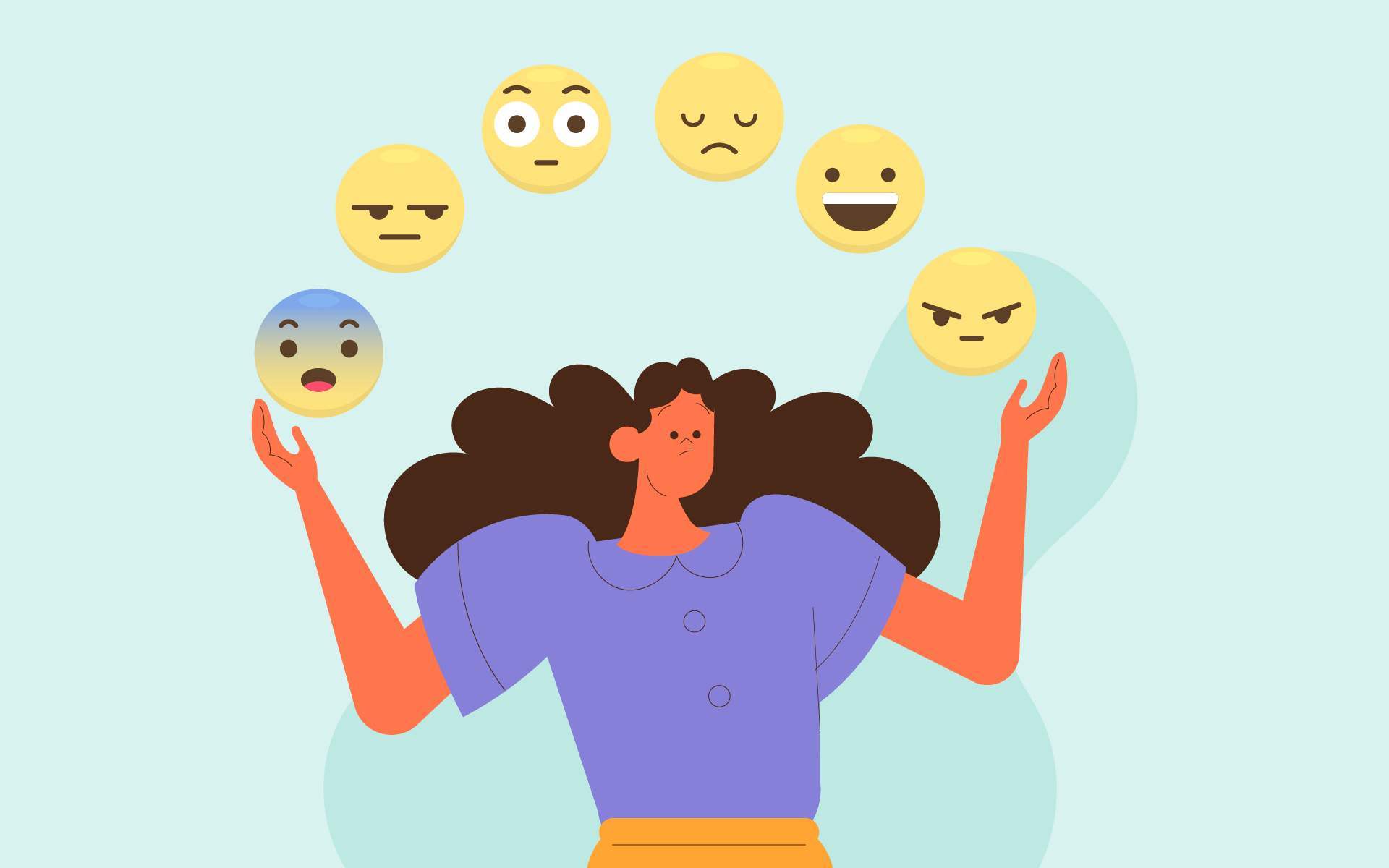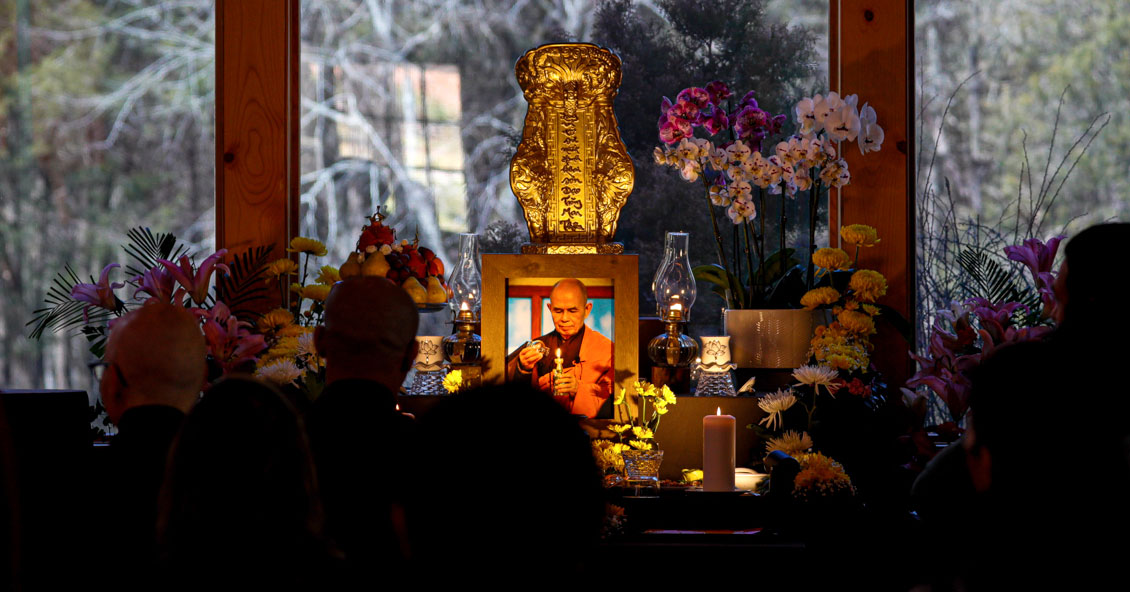Making Space: A Mindful Guide to Processing Post-Election Emotions
When we experience emotional intensity, it’s important to give ourselves grace, rest, and time to heal. Shalini Bahl offers three practical steps along with a meditation to help us all process post-election emotions. The post Making Space: A Mindful...

In times of deep division and uncertainty, many of us feel pressure to “move on” or “come together” quickly, before we’ve properly processed our feelings. This tendency to rush past our emotions can lead to superficial healing at best, and deeper wounds at worst. True healing—whether personal or collective—begins with creating space to process post-election emotions by feeling what we feel without judgment.
1. Notice Your Protective Patterns
Before we can heal, we need to recognize how we might be bypassing our emotions. Which of these patterns feel familiar?
Keeping Busy: Immediately jumping into “fix-it” mode or taking on extra projects when feeling vulnerable, using constant activity as a way to avoid sitting with uncomfortable feelings Pretending: Maintaining a polished exterior while internally struggling, especially in professional settings or with family—often, it’s saying “I’m fine” when you’re actually not Analyzing: Analyzing feelings from a safe mental distance rather than experiencing them, turning emotional experiences into problems to be solved rather than feelings to be felt Distracting: Using endless scrolling, excessive exercise, or other activities that serve to redirect our attention away from our emotions Numbing: Coping with alcohol or other substances, comfort eating, to dull difficult emotions and temporarily escape discomfort Caretaking: Over-focusing on others’ needs while neglecting our own emotional landscape, using service to others as a way to avoid our own inner work Spiritual Bypassing: Using spiritual practices or positive thinking as an escape route rather than as genuine tools for processing, rushing to “transcend” difficult emotions before fully acknowledging themTrue healing—whether personal or collective—begins with creating space to feel what we feel without judgment.
2. Give Yourself Permission to Pause
Now that you’ve recognized your patterns of avoiding discomfort, the next step is simple but powerful: pause. This means temporarily stepping away from our habits of constant doing, fixing, and analyzing.
Consider this an invitation to:
Step away from the constant barrage of news and social media. (If you want to stay informed, set specific times to check the news.) For a few moments, let go of striving to “fix” anything. Notice how this feels in your body and your mind. Give yourself and others grace during this emotional time. Remember that everyone processes differently and at their own pace. Trust that understanding and connection will come, but they can’t be forced.While pausing is essential, healing also requires active practices that engage our body and senses. Research offers clear guidance on what works.
3. Create Space to Feel and Heal
Find your own ways to intentionally create spaces for healing with activities that engage your sensory awareness—for example, cooking, making and listening to music, painting, writing, and other art forms. You may enjoy these activities on your own or in community.
In particular, two evidence-based strategies to heal and manage stress are being in nature and moving our body.
The Science of Nature and Healing
Research shows our innate connection to nature (biophilia) has real healing effects. A landmark study found that hospital patients with views of nature recovered faster and needed less pain medication than those facing brick walls. Even brief nature encounters can reduce stress hormones and improve well-being.
Try these science-backed nature practices:
Mindful Window Moments: Take 3-5 minutes to observe nature outside your window—notice the movement of leaves, birds, or clouds. Studies show even brief nature views can lower heart rate and blood pressure. Nature Walking: Find a green space for a 15-minute walk. Notice the touch of the air on your face, the sound of leaves or gravel under your feet, the rhythm of your steps. Research shows walking in nature reduces rumination and anxiety more effectively than urban walks.Movement as Medicine
If running, yoga, or other sports don’t speak to you, try dancing. Dance therapy research shows movement helps process emotions trapped in our bodies. Dance is known to promote emotional, social, cognitive, physical, and spiritual integration leading to improved health and well-being.
When we feel stuck, simple movement can shift our state:
Kitchen Dancing: Put on an inspiring song and let your body move freely. Notice how different parts of your body want to express themselves. Gentle Shaking: Stand comfortably and gently shake your body for 1-2 minutes, letting tension release. Notice areas that feel tight or free.Now that we’ve explored ways to pause and engage in healing practices, let’s bring it all together with a guided meditation that helps us return to ourselves, listen deeply, and begin taking mindful action.
A Healing Meditation to Process Post-Election Emotions
Too often, we finish a meditation session and then rush back into life without taking time to reflect and listen to our needs. Not taking this time means we’re more likely to default to our usual ways of thinking and reacting in the real world, despite our best intentions. Before we begin our interactions, it’s important to remember to return to our intentions and insights.
Healing can’t be rushed. By creating space for our emotions now, we build a stronger foundation for whatever comes next.
Let’s practice together, with three steps: return, listen, and begin.
Return to our present moment experience (3-5 minutes)The first step in mindfulness meditation is to stabilize the mind by returning to an anchor, whether it’s the feeling or sound of your breath, body sensations, or sounds in the environment. For a few minutes let go of any rushing, judging, or striving.
Take a few deep breaths, letting your exhales be slow and complete. Now let your breath find its natural rhythm. Notice the sensation of breathing—perhaps the slight coolness of air at your nostrils, or the gentle rise and fall of your chest.
As you sit here, become aware of the points of contact between your body and your seat, your feet and the floor. Feel the support beneath you. When your mind wanders to election concerns or other thoughts, gently acknowledge them and return to these sensations of support and breathing.
Now scan your body slowly, noticing any areas of tension. Are your shoulders raised? Is your jaw clenched? Without trying to change anything, simply notice what’s here. Let each exhale invite a tiny bit more softening. Once you feel centered in your body, shift to the next step of listening within.
Listen within and ask what you need (3-5 minutes)Once you feel connected with yourself, you can start to inwardly listen, becoming aware of your thoughts and emotions. What feelings are present? Perhaps anxiety, anger, fear, hope, or numbness. Make room for all you are feeling without needing to fix or change anything.
Notice where these emotions live in your body. Does anxiety swirl in your stomach? Does fear create tightness in the chest? Does sadness feel heavy in your shoulders? Let each feeling have space to be felt and heard.
Now gently ask yourself: “What do I need in this moment?” Maybe it’s rest, connection, movement, or quiet. Let the answer emerge naturally from your body’s wisdom rather than your thinking mind. Trust your inner knowing.
Begin to take actions that nurture you (5-7 minutes)As this practice draws to a close, consider one small way to care for yourself today. Perhaps it’s taking a walk at lunch, calling a supportive friend, or setting a boundary with news consumption.
Choose something specific and achievable. Rather than “I should exercise more,” perhaps you decide, “I’ll step outside for five minutes at lunch.” Rather than “I need to stay informed,” maybe your intention is “I’ll check news once in the evening for 15 minutes.”
Take a moment to imagine yourself doing this one small thing. See the details—where you’ll be, what time of day, what it will feel like in your body.
Before opening your eyes, take three slow breaths, feeling the support beneath you and your own capacity for self-care and healing.
Remember, you can return to any part of this practice throughout your day—a few conscious breaths, a moment of listening to your needs or recommitting to one small caring action.
Healing can’t be rushed. By creating space to process our post-election emotions now, we build a stronger foundation for whatever comes next. Start small, be gentle with yourself, and trust your path to genuine healing. From this place of inner calm and clarity we can begin the work of understanding and bridging our differences.
The original version of this article was published at knowyourmind.training.

 Lynk
Lynk 
































